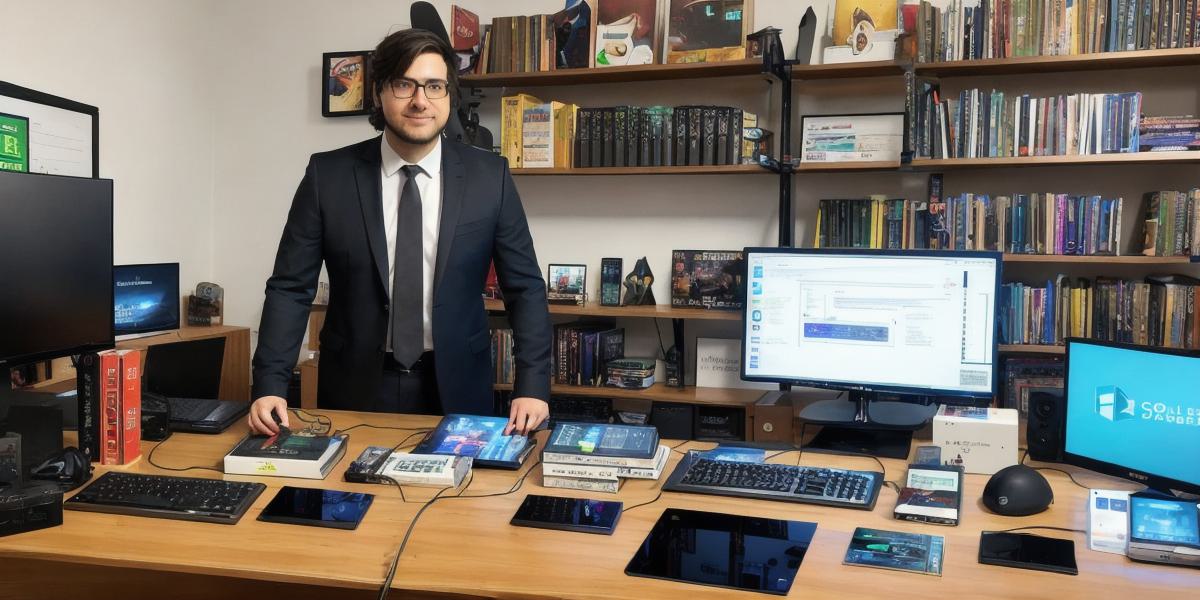In recent years, game development has become an increasingly popular field, with more and more individuals seeking to create their own games and bring their ideas to life. Whether you’re a seasoned developer or just starting out, there are several techniques that can help you create a successful game. In this article, we’ll explore some of the most effective game development techniques to help you launch your game on the right path to success.

- Define Your Target Audience
One of the most important aspects of game development is defining your target audience. Understanding who your game is for and what they are looking for in a game can greatly impact its success. For example, if you’re creating a children’s game, you’ll need to focus on fun, interactive gameplay that will capture their attention and keep them engaged. On the other hand, if you’re targeting a more mature audience, you may want to focus on more complex storytelling and challenging game mechanics.
- Conduct Market Research
Market research is an essential step in game development. It involves gathering information about your target audience, competitors, and industry trends to help inform your game’s design and development process. This can include conducting surveys, analyzing competitor strategies, and looking at market trends to identify areas where you can differentiate your game from others in the industry.
- Create a Compelling Storyline
A compelling storyline is one of the key elements that can make a game stand out from the competition. A good story can help draw players in and keep them engaged throughout the game. However, creating a strong storyline requires careful planning and execution. It’s important to have a clear understanding of your game’s world, characters, and plot before you start developing. This will help ensure that your storyline is engaging and coherent, keeping players invested in the game from start to finish.
- Focus on Gameplay Mechanics
Gameplay mechanics are the rules and systems that govern how players interact with the game. These can include things like movement, combat, puzzles, and more. When developing your game, it’s important to focus on creating intuitive and engaging gameplay mechanics that are easy for players to understand and use. This will help ensure that your game is accessible to a wide range of players and that they are able to enjoy the game without getting bogged down by complicated controls or confusing rules.
- Use Effective Art and Design
Art and design play a crucial role in making a game visually appealing and engaging. Good art and design can help bring your game’s world and characters to life, making them feel more real and immersive. However, creating effective art and design requires careful planning and execution. It’s important to have a clear understanding of your game’s visual style and aesthetic before you start developing, and to work closely with artists and designers to ensure that the final product is cohesive and visually appealing.
- Optimize for Mobile Devices
In today’s world, mobile devices are becoming increasingly popular platforms for gaming. This means that if you want your game to reach a wide audience, it’s important to optimize it for mobile devices. This can include things like designing for smaller screens, using touch controls instead of physical buttons, and ensuring that the game is easy to play on the go. By optimizing your game for mobile devices, you can reach a larger audience and increase its chances of success.
- Test and Iterate
Testing and iteration are essential steps in game development. Testing involves playing the game and identifying areas where it needs improvement, while iteration involves making changes to the game based on feedback from testers. This process should be repeated multiple times throughout the game development process, allowing you to refine and improve your game until it’s ready for launch.
- Monetize Your Game
Finally, when developing a game, it’s important to consider how you will monetize it. There are several ways to monetize a game, including selling it outright, offering in-app purchases, or using ads. However, the best way to monetize your game will depend on its genre, target audience, and other factors. It’s important to have a clear understanding of your game’s potential revenue streams before you start developing, so that you can make informed decisions about how to monetize it.
Case Studies
To illustrate these points, let’s take a look at some real-world examples of successful game development techniques in action.
- Minecraft: Defining Your Target Audience
Minecraft is an excellent example of a game that has defined its target audience. The game is designed for players of all ages and skill levels, with a focus on creativity and exploration. This has allowed the game to appeal to a wide range of players and has helped it become one of the most popular games of all time.
- Angry Birds: Conducting Market Research
Angry Birds is another great example of effective game development techniques in action. The game was developed by a small Finnish company called Rovio, who conducted extensive market research before launching the game. They identified a gap in the market for casual mobile games that were fun and engaging, and used this information to create a game that filled that need. This helped the game become an instant hit and has allowed it to continue to grow and evolve over time.
- The Witcher 3: Creating a Compelling Storyline

The Witcher 3 is a great example of how creating a compelling storyline can make a game stand out from the competition. The game’s complex, engaging storyline has helped it become one of the most popular RPGs of all time and has earned it critical acclaim. By investing in its storyline, the developers were able to create a game that resonated with players on a deeper level and helped it succeed long after its initial launch.
- Fortnite: Focusing on Gameplay Mechanics
Fortnite is a great example of how effective gameplay mechanics can help a game become popular. The game’s fast-paced, action-packed gameplay has made it an instant hit with players of all ages, and its popularity has helped it grow and evolve over time. By focusing on creating intuitive and engaging gameplay mechanics, the developers were able to create a game that resonated with players and helped it become one of the most popular games of all time.
- Pokémon Go: Optimizing for Mobile Devices
Pokémon Go is an excellent example of how optimizing for mobile devices can help a game become successful. The game was designed specifically for mobile devices, with features like augmented reality and location-based gameplay that made it easy to play on the go. This helped the game become an instant hit with players of all ages and has allowed it to continue to grow and evolve over time.
- Grand Theft Auto V: Testing and Iteration
Grand Theft Auto V is a great example of how testing and iteration can help a game improve over time. The game was developed over several years, with extensive testing and feedback from players helping to refine and improve the final product. This helped the game become one of the most successful and critically acclaimed games of all time and has allowed it to continue to grow and evolve over the years.
- Clash of Clans: Monetizing Your Game
Clash of Clans is an excellent example of how monetization can be used effectively in game development. The game was developed by a small Finnish company called Supercell, who made it free to download and play but monetized it through in-app purchases. By offering players the ability to purchase additional resources and upgrade their buildings, the developers were able to create a revenue stream that helped the game become one of the most successful mobile games of all time.
Conclusion
Game development is a complex process that requires careful planning, execution, and testing.



